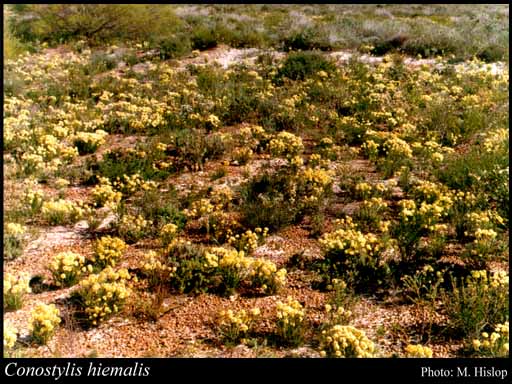- Reference
- Fl.Austral. 45:460 (1987)
- Conservation Code
- Not threatened
- Naturalised Status
- Native to Western Australia
- Name Status
- Current
Rhizomatous, tufted perennial, grass-like or herb, 0.1-0.2 m high. Fl. yellow-cream, Jun to Aug. White, grey or yellow sand, sandy loam, laterite. Winter-wet depressions.

Scientific Description
Leaves flat, 55-160 mm long, 0.6-2.3 mm wide; bristles or hairs on the leaf margin present or absent, 1.5-5 mm long, with at least some small side branches at the base, straight and rigid or flexuose and soft, diverging outward at around 90°, lying parallel with the margin or angled towards the leaf apex; hairs on the surface of the leaf absent (leaf surfaces glabrous). Scape present, hairy, 75-170 mm long. Inflorescence subtended by a bract 7-20 mm long, with several flowers; floral bracts 5.5-8 mm long; pedicels sessile; flowers 10-12 mm long. Perianth hairy, radially symmetrical, uniformly coloured, yellow, with six more or less equal tepals, the inner segments 5-6.5 mm long. Stamens six, in one level; filaments 0.6-1 mm long; anther 4-5 mm long, with an appendage. Style 7-9 mm long. Flowers in June, July or August. Occurs in the Geraldton Sandplains, Swan Coastal Plain and Avon Wheatbelt IBRA bioregion(s), of the South-west Botanical Province.
Distribution
- IBRA Regions
- Avon Wheatbelt, Geraldton Sandplains, Swan Coastal Plain.
- IBRA Subregions
- Dandaragan Plateau, Geraldton Hills, Katanning, Lesueur Sandplain, Merredin, Perth.
- IMCRA Regions
- Central West Coast.
- Local Government Areas (LGAs)
- Carnamah, Coorow, Dandaragan, Irwin, Moora, Three Springs.